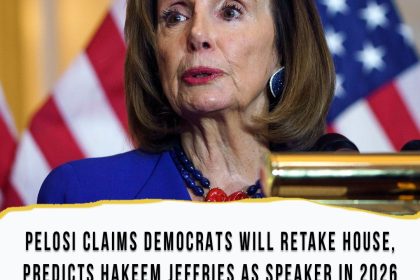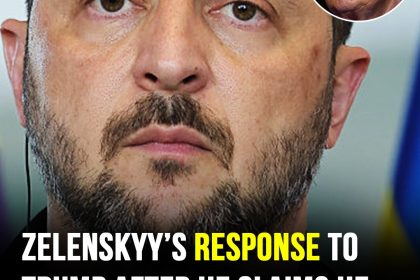In the unforgiving arena of American politics, few truths are spoken as bluntly as the ones that emerge from seasoned strategists who have witnessed the rise and fall of countless political careers. This week, such a moment of stark honesty has sent shockwaves through Democratic circles, as one of the party’s most respected voices delivered a message that could fundamentally alter the trajectory of presidential ambitions for 2028.
The assessment came not from a partisan opponent or media pundit, but from within the Democratic establishment itself—a figure whose strategic insights have shaped presidential campaigns for decades. The implications of this candid evaluation extend far beyond individual political careers, potentially redefining how the Democratic Party approaches its next chapter and which faces will represent its future.
For those harboring hopes of political redemption or second chances, the message was unmistakably clear: the Democratic Party is ready to turn the page, and some chapters are definitively closed. The ramifications of this political reality check are already reverberating through potential campaign operations, donor networks, and the broader landscape of Democratic politics as the party begins its long journey toward 2028.
Carville’s Uncompromising Assessment
James Carville, the legendary Democratic strategist known for his role in Bill Clinton’s successful 1992 presidential campaign, delivered what may be the most definitive statement yet about Kamala Harris’s political future. Speaking on his Politics War Room podcast, Carville didn’t mince words when addressing concerns about Harris potentially mounting another presidential campaign in 2028.
“Don’t be terrified,” Carville told a concerned listener who had expressed fears about Harris’s continued political presence. The strategist’s tone was reassuring but his message was unambiguous: Harris would not be a factor in the next Democratic primary battle.
Carville’s assessment went beyond simple political analysis—it represented a brutal but necessary acknowledgment of electoral reality. “She wisely chose not to run for governor of California,” he noted, referring to Harris’s recent decision to forgo a gubernatorial bid that many saw as a potential stepping stone to another presidential run.
The veteran strategist’s most damning observation came when he declared flatly that Harris would not be the Democratic Party nominee in 2028. His reasoning was rooted in what he sees as a fundamental shift in party sentiment: “Anybody that had anything to do with 2024, the party wants to move on from that.”
This wasn’t personal animosity speaking, Carville insisted, but cold political calculation. “This isn’t anybody’s fault,” he clarified, suggesting that the desire for change stems not from individual failures but from the electoral outcomes and the party’s need for a fresh start.
The Broader 2024 Purge
Carville’s critique extended well beyond Harris, encompassing what he sees as a necessary cleansing of the entire 2024 Democratic operation. Minnesota Governor Tim Walz, who served as Harris’s running mate, also found himself in Carville’s crosshairs.
“This goes to Walz, too. I wouldn’t run again,” Carville said, making clear that his assessment wasn’t limited to the top of the ticket. The strategist positioned himself as offering friendly but firm advice: “If I were your friend, if I were your chief advisor, I’m doing this not from a personal standpoint, but because this is not going to be the environment where Democrats look to anybody connected to the 2024 campaign.”
This sweeping dismissal of 2024 figures represents more than strategic advice—it’s a fundamental reimagining of Democratic leadership. Carville’s message suggests that the party views the 2024 election not as a close loss requiring minor adjustments, but as a comprehensive failure requiring wholesale change.
The implications for other 2024 figures remain unclear. While Carville didn’t explicitly mention other campaign principals, his broad brush approach suggests that anyone closely associated with the Harris-Walz ticket may find themselves facing similar political exile.
The Biden Factor
Carville’s co-host, Al Hunt, used the platform to deliver his own pointed message to former President Joe Biden. “Joe Biden, would you please go take the restful retirement you so richly deserve?” Hunt asked, adding another voice to what appears to be a growing chorus within Democratic circles calling for the party’s elder statesmen to step aside.
This direct appeal to Biden reflects a broader tension within the Democratic Party about the role of its most recent leaders. While Biden’s decision not to seek reelection was initially praised by many Democrats as a selfless act, some party strategists now appear eager for him to retreat entirely from the political spotlight.
The relationship between Biden and the party has grown increasingly strained since the election, with some Democrats privately blaming his late decision to step aside for contributing to Harris’s eventual defeat. Others point to his age and approval ratings as factors that may have made a Democratic victory impossible regardless of the nominee.
Hunt’s comment also reflects concerns about the tendency of former presidents and vice presidents to remain visible in party politics, potentially overshadowing newer voices and limiting the party’s ability to rebrand itself for future elections.
The 2028 Landscape Takes Shape
Despite the clear message about 2024 figures, the Democratic field for 2028 is already beginning to crystallize around several high-profile potential candidates. According to multiple reports, several top Democrats are positioning themselves for presidential runs, suggesting that while some doors are closing, others are opening wide.
Pete Buttigieg’s Digital Strategy
Former Transportation Secretary Pete Buttigieg continues to build his national profile through what observers describe as an innovative approach to political communication. Rather than following traditional Democratic media strategies, Buttigieg has been aggressively engaging in digital media spaces, appearing on podcasts and platforms that reach audiences often ignored by establishment Democrats.
Speaking with the Washington Examiner, Buttigieg outlined his philosophy: “I’m using my voice best I can in traditional media and new media, and I’m going to continue having conversations with neighbors, with voters, talking about how we could have a better way.”
Buttigieg’s approach represents a recognition that political communication has fundamentally changed since his 2020 presidential run. His willingness to engage with non-traditional media and reach across party lines suggests a strategic understanding that winning in 2028 may require appealing to voters who have become disenchanted with conventional politics.
“I don’t know what that means for me, politically or professionally, a long way from making any decisions about that, but I know that’s what I need to be doing right now,” Buttigieg told the publication, maintaining the careful balance between visibility and premature campaign launches that characterizes savvy presidential hopefuls.
Gavin Newsom’s California Platform
California Governor Gavin Newsom represents another prominent figure likely to enter the 2028 race. As governor of the nation’s most populous state and a liberal stronghold, Newsom brings both executive experience and progressive credentials that could appeal to the Democratic base.
Newsom’s positioning has been more traditional than Buttigieg’s, focusing on gubernatorial achievements and maintaining high visibility through policy initiatives and media appearances. His ability to govern during crises, including the COVID-19 pandemic and various natural disasters, has provided him with executive experience that could prove valuable in a presidential campaign.
The California governor’s challenge will be overcoming perceptions that he represents coastal elite liberalism that may not resonate with voters in swing states. His successful defense against a recall election demonstrated his political skills within California, but translating that success to a national stage remains an open question.
Wes Moore’s Strategic Restraint
One of the most interesting developments in early 2028 positioning has been Maryland Governor Wes Moore’s explicit decision to remove himself from presidential speculation. Despite being frequently mentioned as a rising star in Democratic politics, Moore has taken the unusual step of definitively ruling out a 2028 run.
“I’m not running,” Moore told The Associated Press in a recent interview, addressing speculation that had been building around his potential candidacy. When pressed further, he also ruled out seeking the vice presidential nomination, saying he wasn’t trying to get his name in the conversation for that role either.
Moore’s decision represents a strategic calculation that may actually enhance his long-term political prospects. By focusing entirely on his gubernatorial duties and avoiding the early positioning that characterizes presidential hopefuls, Moore may be positioning himself as a fresh face for future elections while building a stronger governing record.
The governor downplayed his high-profile trips to other states, including recent visits to South Carolina, an early primary state. “And people should get very used to me going all over the country bringing business back to Maryland, because that’s exactly what I plan on doing as long as I’m the governor of the state,” Moore explained.
Moore’s approach reflects lessons learned from politicians who launched presidential campaigns too early or without sufficient governing experience. By explicitly taking himself off the table for 2028, he may be calculating that 2032 or beyond could provide better opportunities for a presidential run.




